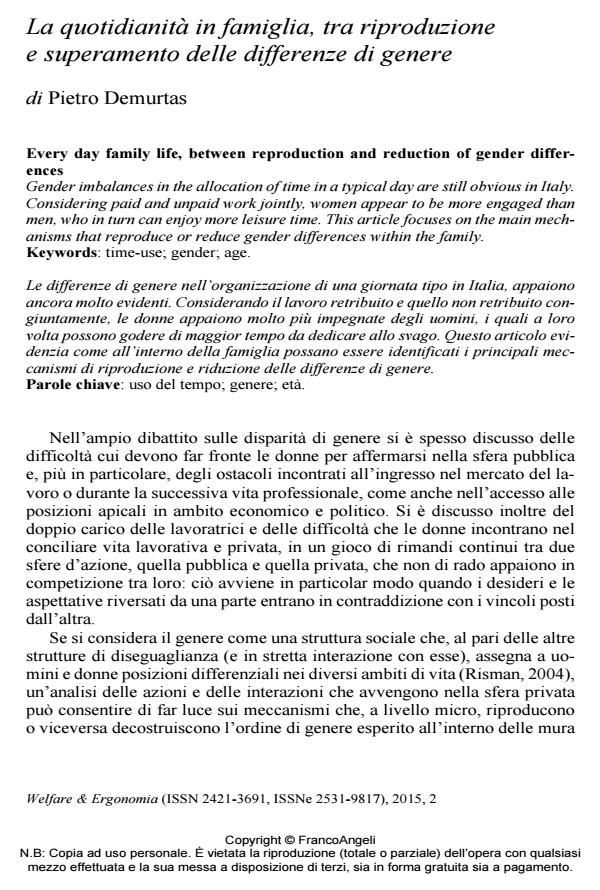Every day family life, between reproduction and reduction of gender differences
Journal title WELFARE E ERGONOMIA
Author/s Pietro Demurtas
Publishing Year 2017 Issue 2015/2
Language Italian Pages 13 P. 175-187 File size 187 KB
DOI 10.3280/WE2015-002014
DOI is like a bar code for intellectual property: to have more infomation
click here
Below, you can see the article first page
If you want to buy this article in PDF format, you can do it, following the instructions to buy download credits

FrancoAngeli is member of Publishers International Linking Association, Inc (PILA), a not-for-profit association which run the CrossRef service enabling links to and from online scholarly content.
Gender imbalances in the allocation of time in a typical day are still obvious in Italy. Considering paid and unpaid work jointly, women appear to be more engaged than men, who in turn can enjoy more leisure time. This article focuses on the main mechanisms that reproduce or reduce gender differences within the family.
Le differenze di genere nell’organizzazione di una giornata tipo in Italia, appaiono ancora molto evidenti. Considerando il lavoro retribuito e quello non retribuito congiuntamente, le donne appaiono molto più impegnate degli uomini, i quali a loro volta possono godere di maggior tempo da dedicare allo svago. Questo articolo evidenzia come all’interno della famiglia possano essere identificati i principali meccanismi di riproduzione e riduzione delle differenze di genere.
Keywords: Time-use; gender; age.
Pietro Demurtas, La quotidianità in famiglia, tra riproduzione e superamento delle differenze di genere in "WELFARE E ERGONOMIA" 2/2015, pp 175-187, DOI: 10.3280/WE2015-002014